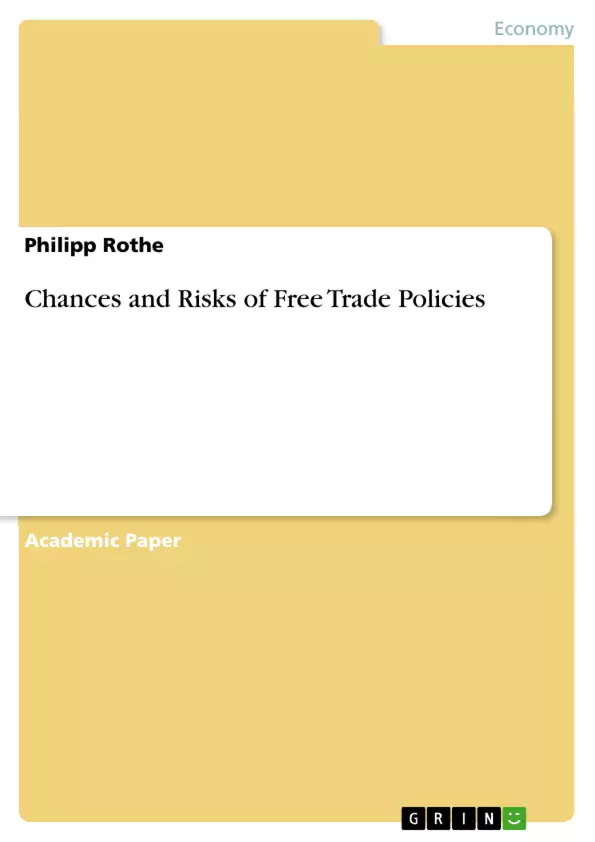This paper examines the definition, history and status of free trade in the world today.
In history a lot of countries acted in accordance with protectionist trade policies which means they had a lot of barriers, tariffs, and limits towards the trade with other countries. The aim was to protect their own economy. However, in today's world there is much more free trade which means "the buying and selling of goods, without limits on the amount of goods that one country can sell to another and without special taxes on the goods bought from a foreign country".
The theory of free trade was first invented in 1776 by Adam Smith. And although it goes back to colonial times, free trade remained a theory for centuries. Ever since Adam Smith's concept of free trade, merchants tried to remove trade barriers between countries again and again. But especially during the industrialization period the countries used trade barriers to boost their economy. As late as after the second world war, the US for example started to lower import tariffs. The idea of lowering tariffs is that more trade takes place, countries can specialize economically in what they do best and afterwards exchange these products for goods that they don't produce most efficiently or that they don't have easily available.
That in turn means the people are freer to choose their position in the economy, the worlds resources are used more efficient and the wealth of nations is growing. In a nutshell it means a country can compete in the global market by specializing to its fundamental economic strengths and by doing this increase economic growth. Some international institutions such as the World Bank, International Monetary Fund, and the World Trade Organization (WTO) were founded to promote free trade in place of protectionism and so helped to build the world how it is today in terms of trading.
Inhaltsverzeichnis (Table of Contents)
- Definition, history, and status of free trade
- Advantages of free trade
- Comparative Advantage
- Increased Competition
- Dissemination of Democratic Values
- Disadvantages of free trade
- Job Outsourcing
- Infant Industry Argument
- Degradation of Natural Resources
Zielsetzung und Themenschwerpunkte (Objectives and Key Themes)
This text explores the concept of free trade, examining its historical development, advantages, and disadvantages. The author aims to provide a comprehensive analysis of free trade, considering both its potential benefits and its potential drawbacks.
- Historical development of free trade
- Economic arguments for and against free trade
- Social and environmental impacts of free trade
- The role of international institutions in promoting free trade
- Case study of the trade war between the USA and China
Zusammenfassung der Kapitel (Chapter Summaries)
Chapter 1 introduces the concept of free trade, tracing its history from the protectionist policies of the past to the rise of free trade agreements in the modern era. This chapter also discusses the theoretical foundations of free trade and the role of international institutions in promoting it.
Chapter 2 focuses on the advantages of free trade, highlighting the theory of comparative advantage, increased competition, and the dissemination of democratic values as key benefits. The chapter explores how free trade can contribute to economic growth, innovation, and improved standards of living.
Chapter 3 examines the potential disadvantages of free trade, including job outsourcing, the infant industry argument, and the degradation of natural resources. The chapter presents arguments against free trade and explores the potential challenges it poses for developing countries.
Schlüsselwörter (Keywords)
Free trade, protectionism, comparative advantage, globalization, economic growth, innovation, competition, job outsourcing, infant industry argument, environmental degradation, trade agreements, World Trade Organization (WTO), USA-China trade war.
- Quote paper
- Philipp Rothe (Author), 2020, Chances and Risks of Free Trade Policies, Munich, GRIN Verlag, https://www.hausarbeiten.de/document/906982


